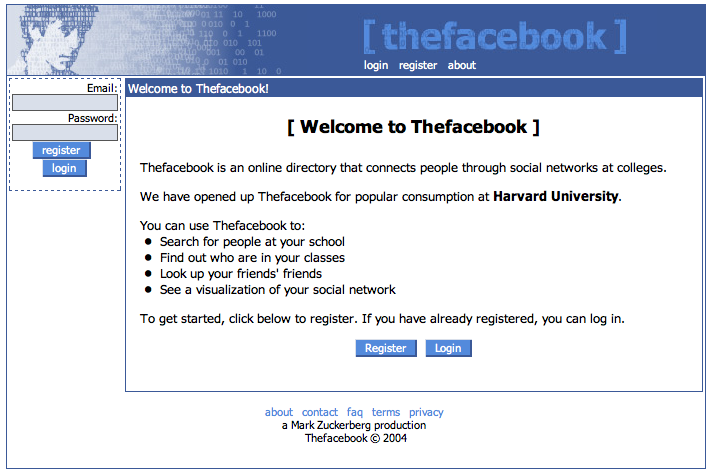Everything You Need to Know About MVPs

Not a lot of people are aware of the benefits of MVPs.
More often than not, an MVP or “Minimum Viable Product” is a misunderstood concept.
The name implies that the initial release of a product won’t be as thought out as the final, fully developed version. It's easy to believe that this “lesser” version of a website or mobile application will put companies at risk of failure, but that isn’t the case at all!
An MVP is a valuable (potentially the most valuable…) tool that you can utilize to test a limited version of your website or app to validate your ideal customer experience.
What an MVP does for a business is similar to what a soft opening does for a restaurant. The audience and menu are limited, and the atmosphere and staff are brand new. Hosting a soft opening (or launching an MVP) leaves room to make some changes before the final reveal! After you test your limited menu (or web or mobile product) you can advance to a larger menu with more items, extend your business hours, or test new techniques to bring in even more business.
It all depends on what you learned from your initial MVP launch.
So, what exactly is an MVP?
A minimum viable product (MVP) is a version of a website, web application, or mobile app with only the features and functionality needed to accomplish your core customer experience goals. What you learn from initial customers (early adopters) will help provide perspective for future product iterations.
The MVP concept involves carrying out market analysis beforehand, which can include finalizing your preferred customer journey, deciding on target audiences, an in-depth competitor analysis, and determining business goals.
MVPs provide engineers with a formulaic approach from which to build. It’s similar to applying the scientific method but in the context of proving business hypotheses.
Think of a science project, but make it for businesses. An MVP strategy gives you test subjects, an experiment, and a hypothesis to prove the value and structure of your idea.
The advantages of MVPs
Once the product is released, customer feedback and actions will help you tailor your digital product in its early stages to be more successful later on. By monitoring your early customers' experience with your web or mobile product, you can better gauge how your initial design lends itself to your business goals.
Take a look at the steps they are taking within the web or mobile application–is that what you wanted them to do? If not, you now have a deeper understanding of what features and functionality you need to change for your next iteration.
Releasing an MVP means that your engineers can then iterate on the app or website and respond to feedback garnered from your MVP strategy, challenging and validating questions about the product's needs. This approach avoids lengthy development cycles and commitment to unnecessary work too early on and can save you both money and development time.
So to sum up the advantages of an MVP, you save time, money, AND resources all while gaining a clear understanding of how your customers interact with your product.
Did you know? The term ‘MVP’ was coined and defined in 2001 by Frank Robinson and then popularized by Steve Blank and Eric Ries.
The purpose of an MVP
- Test a product hypothesis with minimal resources or cost
Implementing an MVP allows businesses with minimal resources to validate their customer experience assumptions with their audiences without spending an exorbitant amount. When you’re operating with a tight budget, an MVP is a great way to break your product into the market and prove a concept.
- Accelerate learning
An MVP provides a great way for businesses to learn. You’ll discover very quickly if the user experience is working as planned, which gives your team the ability to make faster decisions in terms of what to do next. Since an MVP provides a limited playing field for your customer, this shortened customer journey means there is less data to review and less functionality to asses.
- Reduce engineering hours and cost
Through an MVP strategy, you can save valuable engineering time on developing a fully-fledged product. Your engineers have a grasp on the essential customer journey requirements without worrying about enhancing features that are not as valuable. You’ll also avoid extensive fixes that come with releasing your product all at once.
- Get the product to customers as soon as possible
Getting your web or mobile app product into the marketplace with a tight deadline can be stressful. Releasing an MVP means getting your product to the marketplace quickly while maintaining focus on accuracy and quality.
- Find a base for other products
Once you establish the need for your mobile or web product, you can expand to include additional offerings, widening the potential for your brand. Think of an MVP as a starting point! You can build off of the findings from your MVP strategy to grow into a larger, more comprehensive web or mobile application.
Consider this:
The initial version of Facebook can be considered an MVP! In its first stages of development, the site was called Thefacebook and was developed as a basic messaging board for college students. That’s not what Facebook is today, so why did its initial product features need to be tested first?
The first version of Facebook via ClearCode
One reason: this gave the founders of Facebook the ability to focus on their ideal customer experience. They formed an idea, engaged their audiences, and built a foundation to become the global entity they are today.
Related reading: What is Brand Governance? 5 Principles for Managing Your Brand
Types of businesses that implement MVPs
MVPs can be useful for any business, at any level–startup, midsize, or enterprise! The MVP strategy lets business owners operate with the utmost flexibility. It can be utilized for web development, mobile apps, marketing strategy, brand building, and more. As long as you’re focused on your business goal, you can tailor an MVP to fit any customer journey.
It’s almost like a gamified approach to web and mobile product development. The more versions that are tested, the more a business can advance their product to the next level.
Related reading: 8 Questions to Ask When Developing an Enterprise Mobile App
What are some common misconceptions about MVPs?
Let’s address a few misconceptions about MVPs.
Misconception #1: An MVP needs to include every feature on your wish list.
It’s important to note that the focus of implementing an MVP should be placed on the accuracy of the customer journey and the market validation, not trying to fit in every product feature! Tailoring your MVP to accomplish your business's ultimate goal is what will benefit you in the long run. Not only that, but you’ll uncover some features initially included that aren’t necessary and discover which features are the most important to guide your decisions.
Misconception #2: If the MVP is unsuccessful, the product will fail in the marketplace.
If we utilize what we learned from Misconception #1, we know the MVP's purpose is to test a product’s market viability and the success of the desired customer journey, but a failed MVP is not the mark of a failed strategy. This allows you to pivot strategies and understand what you can change to make your product meet customer needs.
Misconception #3: An MVP is a way to quickly build a fully-developed product for cheap.
Companies love the idea of a product that is fast to market, cost-efficient and has all the bells and whistles they can think of. The reality is, you can’t accomplish all three of those things in one go. An MVP isn’t a silver bullet, but it is a great starting point for businesses to learn about their customer journey within their web or mobile product.
Related reading: 3 Ways to Smoothly Migrate Users to a Digital Platform
Now that we’ve gone through the ins and outs of an MVP, let’s discuss your web or mobile product strategy. Contact our team to get started!


